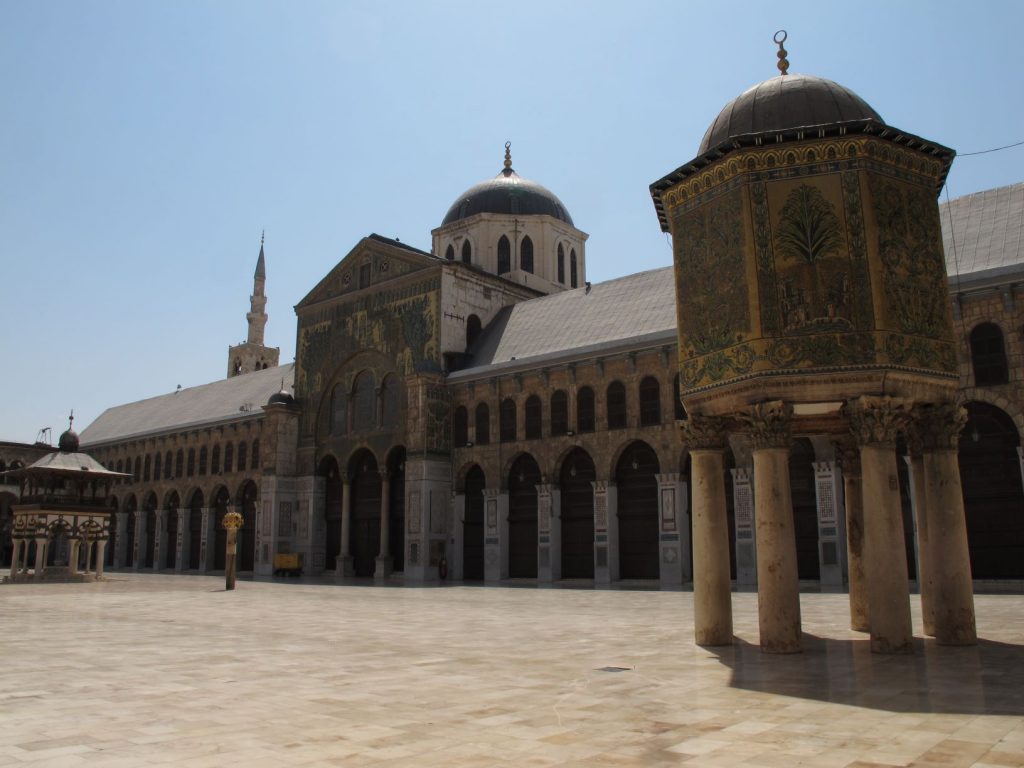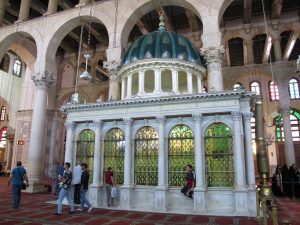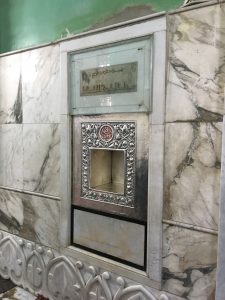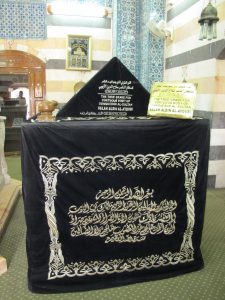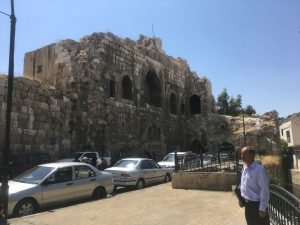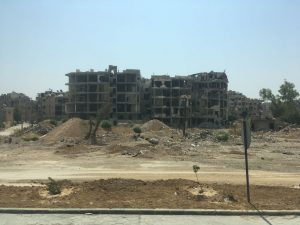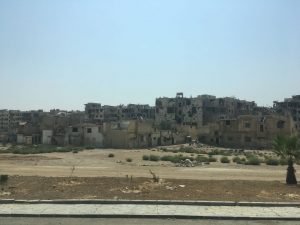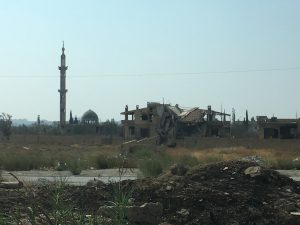Damascus – Syria’s Ministry of Tourism invited journalists from several countries to visit the 61st Damascus International Fair, as well as historical and religious sites damaged during the war that broke out in 2011. During a week in late August and early September. Professionals from Argentina, Cuba, Iraq, Oman, the Czech Republic, and Brazil’s ANBA journeyed across over 1,200 kilometers, spanning the capital, in the southwest, and the countryside and coast, in the northwest. The agency is featuring a series of reports on the trip starting this Tuesday (10).
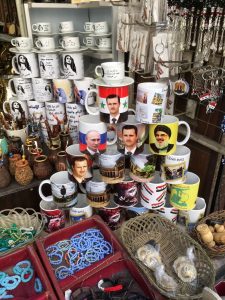
In order to get to Damascus, I had to fly to Beirut, Lebanon, and then cross the border into Syria by car, since not many airlines will fly into Damascus International Airport these days. The heavy military presence along the roads and cities is a constant reminder that the fighting still goes on – as of this trip, mostly in the northwestern Idlib area.
In downtown Damascus, telltale signs of war aren’t easily spotted at first, but wherever you look there’s someone in a uniform. Posters of president Bashar Al Assad are everywhere, as are the colors of the Syrian flag. The faces of Syrian government allies, like Russia’s president Vladmir Putin, and of Lebanese movement Hizbollah’s leader Hassan Nasrallah, are also seen all over – even in souvenirs.
The capital is still bustling, the traffic heavy, and throngs of people walk about in popular shopping areas like Souq Al-Hamidiyah, the best-known of them all. ANBA had last been to Damascus in late 2010, a few months before the war broke out.
Heritage
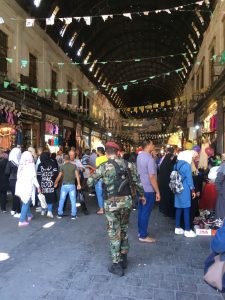
Damascus is one of the oldest continually inhabited cities on Earth, and its downtown area’s home to remnants from multiple civilizations, like the ruins of the Roman Empire’s Temple of Jupiter, and the Umayyad Mosque, erected in the 8th century during the Umayyad Caliphate, and housing a relic that’s revered by Muslims and Christians alike: the purported skull of Saint John Baptist.
In an area adjoining the Mosque’s patio, a sanctuary marks the original burial site of the head of Hussein, son to Ali and Fatima and grandson of prophet Muhammad, whose 7th century death during Battle of Karbala, in what is currently Iraq, further compounded the grudge between Shia and Sunni Muslims. This is a Shia pilgrimage site inside the premisses of a Sunni mosque.
One side of the Mosque harbors the grave of Saladin, the Muslim hero who triumphed over the Crusaders in the 12th century before going on to create the Ayyubid Dynasty and establish a Sultanate spanning Egypt, Syria, Palestine, part of what’s currently Iraq, the Hejaz region in current Saudi Arabia, and Yemen. More recently, this was the burial site of Sunni religious leader Mohammad Said Ramadan Al-Buti, killed in 2013 in Damascus during the Syrian war.
The Ancient City of Damascus is riddled with palaces, lodges, bathhouses, and markets partly enclosed by medieval walls. The remains of an Umayyad Dynasty palace have been converted into a restaurant and a venue for Sufi dance performances. Sufism is a mystical current of Islam whose best-known practitioners are the whirling dervishes, who attain a state of religious ecstasy through a combination of song, dance and prayer. Before the war, people from around the world used to flock to this site to showcase their art, but this isn’t the case anymore, patrons said.
(Story continues after photo gallery)
The historic city center of Damascus was declared a World Heritage Site by United Nations for Education, Science and Culture (UNESCO), and since 2013 is on the UN list of World Heritage in Danger because of the war.
Tourism is a very important activity for Syrian economy. According to the minister of Tourism, Rami Radwan Martini, the country received 9 million visitors in 2010, a year before the conflicts started. During the war, he says, 258,000 direct and indirect jobs linked to the sector were lost.
Two of the guides accompanying the journalists during the trip said that they spent the last eight years with no steady jobs, living on causal earnings as well as support from friends and family, including acquaintances in Brazil, and selling personal belongings.
Dismay
Damascus’ inhabitants told they experienced times of fear and deprivation. During the war, armed groups entrenched in the suburbs of the capital city and, from there, shoot mortars at the city center. A projectile had fell outside Brazil’s embassy early last year, before the Syrian army announced it regained the control of the outskirts in May 2018, when they took over the last stronghold of the self-proclaimed ISIS in the region.
Marcela Jacques from Brazil lives in Damascus with her Syrian husband and their two kids, a 10-year-old girl and a 1-and-a-half-year-old boy. “When trouble really started in 2012, with bombings in the city, I got scared,” she said. She decided to come back to Brazil with her daughter – the boy hadn’t been born back then – and stayed here for around a year, until late 2013, while her husband remained in Syria, where he worked at an embassy. “It got really scaring; there were tanks in the streets, army choppers and planes above,” she recalled. Jacques said that projectiles fell twice near her, the first time on a public building and the second close to Al-Hamidiyah Souq.
The fighting near Damascus was intense and the scared residents witnessed the gunshots against the sky at night. Power shortages were regular, as was the rationing of fuels, even for heating, and the Syrian pound plummeted.
In the outskirts of Damascus, the aftermath is astonishing. Whole districts such as Zamalka, Harasta and Dolma are destroyed, like actual ghost towns.
Roads that are now open for traffic were closed during the fights. On one of them, our reporter went to Maalula and Sednayah, Christian sanctuaries that will be addressed in a story to be published next Wednesday (11).
*ANBA traveled at the invitation of Syria’s Ministry of Tourism. Translated by Gabriel Pomerancblum & Guilherme Miranda



